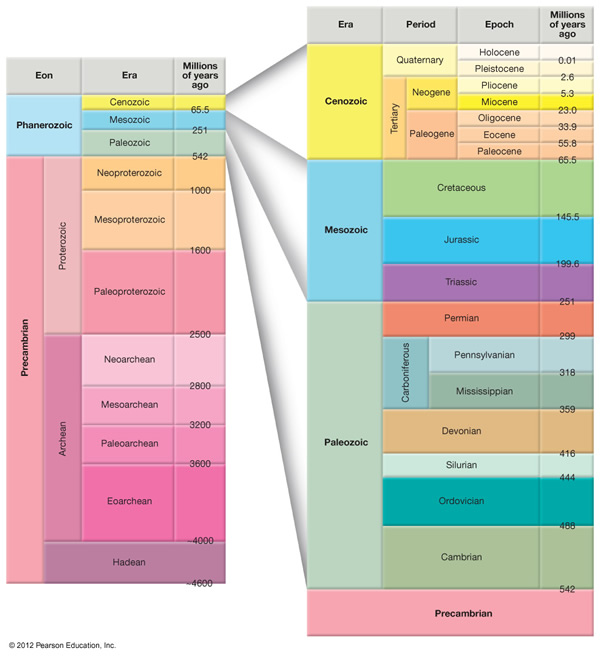The question of the fossil ages is comparable to a central problem in forensic crime investigation, namely establishing the time of death. Did the creatures in the fossil record die tens of millions of years ago or did they die recently (say less than 50,000 years ago). It is mildly unfortunate that criticism of accepted mainstream fossil ages are conflated with YEC, because strictly speaking the age of the fossils is a formally distinct question from the question of Young Earth Creation (YEC) and the age of the Earth.
One reason that criticism of the geological record has been resisted (even within ID circles) is the affiliation of such criticism with YEC. But this does not have to be the case. For example, Richard Milton, who is not a creationist and is an agnostic, believes the accepted mainstream geological ages are false.
And it’s not even all geological ages, but the relatively “small” section of geological timescales known as the Phanerozoic (back 541 million years to the present).
[To see the graphic below more clearly, you might be able to zoom into it here:
Geological Timescales]

Now, a question for defenders of mainstream evolutionary theory, “suppose for the sake of argument the fossils are young (say 50,000 years max). Would you still believe in naturalistic evolution or would you accept ID or (gasp) even special creation?”
I’m asking because critics of ID have demanded more evidence. The irony is that some of the most unsavory and scandalous players in the ID big tent (the YECs) might be delivering a death blow to evolutionism in the minds of those willing to deal fairly with the facts at hand.
NOTES
1. HT Mike Gene for the idea of asking this question in 2005:
A nagging question about MN
According to the Decree, MN “is the foundation of the natural sciences.” But let’s do a thought experiment.
MN is used to determine the age of the Earth. What if MN determined that the Earth was 6000 years old?
MN is used to explore the relationships between living things. What if MN determined that living things can be neatly fitted into discrete, discontinuous groups, such that it would be impossible for them to be related by common descent?
MN is used to study the surface of the Earth. What if MN determined that there once was a global flood?
If MN determined that the Earth was 6000 years old, that evolution could not occur and all living things were fitted into discrete, discontinuous groups, and a global flood once covered the Earth, does MN then mean we must explain this all “without reference to supernatural beings or events?”
2. Here are a few empirical considerations in favor of revising the ages of the fossils (revising the time of death estimates)
Cocktails! C14, DNA, Collagen in dinosaurs indicates geological timescales are false
Cocktails! ICC 2013 C14 dates conflict with Carboniferous Era dates 300 million years ago
Cocktails! Falsifying Darwinism via falsifying the geological column
Cocktails! Astrophysics vs. Darwinist Paleontology
ICC 2013 Creationist Bob Enyart attempts to bribe Darwinist Jack Horner
Expelled Microscopist Mark Armitage responds to his critics
Mark Armitage possibly the latest victim of Darwinists Inquisition
Related:
Cocktails! The relevance of YEC to ID
Distant starlight the thorn in the side of YEC — can there be a middle ground?
The price of cherry picking for addicted gamblers and believers in Darwinism
These links are pretty much all the pro-YEC stuff at UD out of the nearly 11,000 threads at UD. But given the possible payoff for ID if indeed the Phanerozoic is younger than thought, and in addition that the YEC community constitutes about 30% at least of the ID community, the discussion of these topics have to be explored, especially now that the Darwinist Inquisition is now possibly affecting YECs not just the general ID community.
3. My usage of “unsavory and scandlalous players” was a reference to Dembski’s essay referenced here:
Scoundrel Scoundrel, I like the sound of that
supporters of my work constantly pointed to my unsavory associates. I was treated like a political figure who is unwilling to renounce ties to organized crime. It was often put to me: “Dembski, you’ve done some respectable work, but look at the disreputable company you keep.” Repeatedly I’ve been asked to distance myself not only from the obstreperous likes of Phillip Johnson but especially from the even more scandalous young earth creationists.
Bill Dembski
4. photo credits
http://www.iupui.edu/~geol110/assets/02_geotime/EOG_11e_Figure_18_21.jpg
5. It might be interesting to explore the Ediacaran (635-541 million years back) where there were some life forms in evidence.